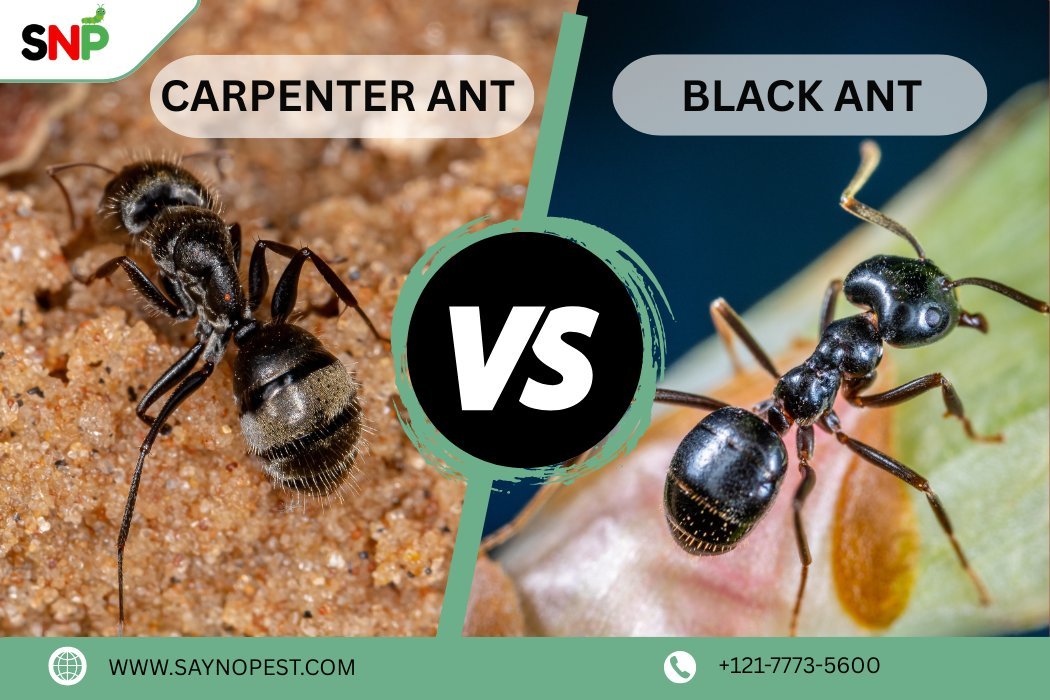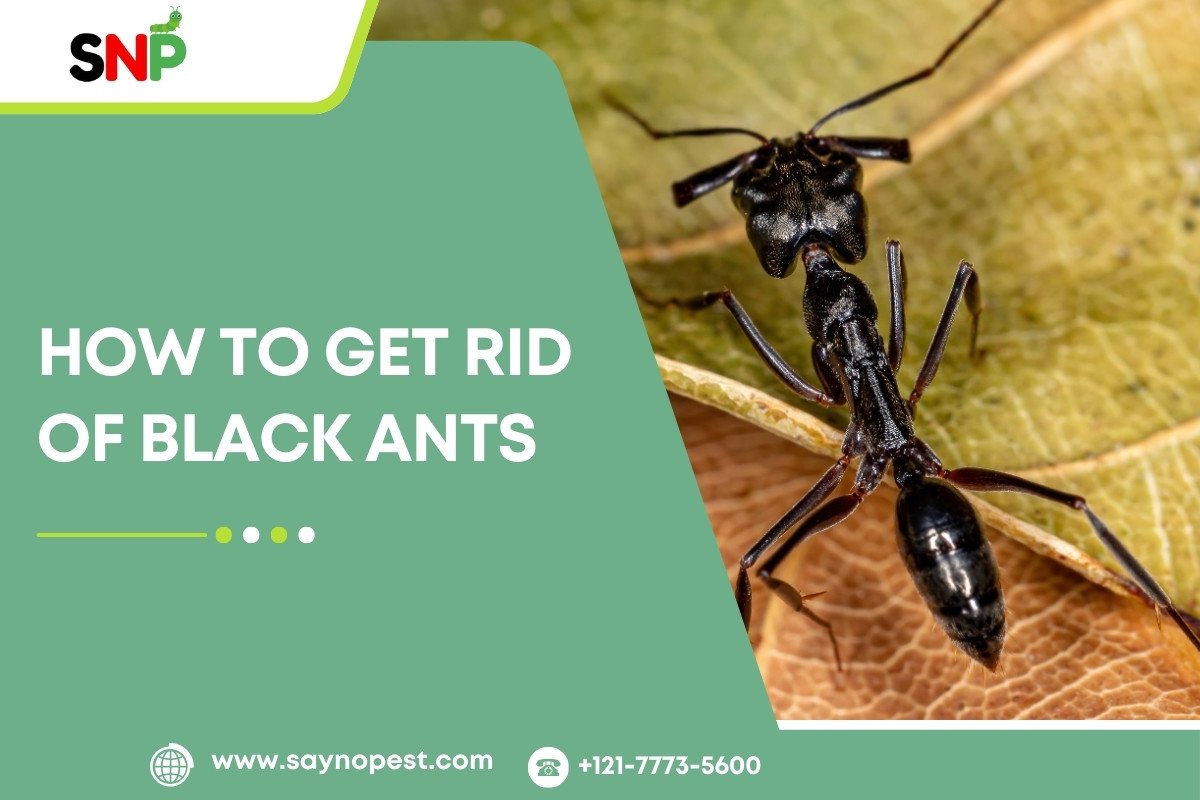One thing is certain, ants are everywhere you go but not all ants are the same. The two most common types that you will find in your house are carpenter ants vs black ants. At first glance, they may look alike but the knowing the different features of carpenter ants and black ants is important. Especially for the safety of your home and the safety of your environment. In this article both these ants are defined, so that you can take action before this becomes a real danger.
How Do Carpenter Ants vs Black Ants Look?

Spotting the difference between starts with size. Carpenter ants vs black ants-
- Carpenter ants are the ant royalty when it comes to size. The black ants are generally 1/16 to 1/8 of an inch long in size that makes them twice smaller than the biggest of the carpenter ants. Carpenter Ants are the ones that are 1/16 to 1/8 inch long.
- When you see a larger than usual ant in your house, the probability of it being a carpenter ant is high.
- Color is another distinguishing feature and if you know it, it is very easy to identify the type of ants even from a distance. Carpenter ants have a black, red, brown, or very dark maroon, and some may have a combination of these colors. Black ants may be shining black or very, very dark brown.
- Carpenter ants have a heart-shaped head, and a single “waist” (petiole) segment that connects their thorax to their abdomen. They also have bent antennae.
- Black ants are more slender, have a rounded body having two petiole segments. Besides, their head is small and round, and the antennae are almost not visible. Moreover, they are longer and thinner than those of carpenter ants.
Behavior Differentiation
Behavior is seen as the decisive factor in the carpenter ants vs black ants riddle. Carpenter ants, for the most part, are nocturnal. They find food during the night, and they hide from predators all day. They are not as likely to lay down visible trails but you could witness them being attracted to a food source or encountering them exit from wall cracks. If they face any disruption, they can become highly dangerous and will fight fiercely to protect their colonies.
Unlike carpenter ants, black ants are day-to-day ants and their most obvious feature is the formation of trails between the nest and the food source. Being social animals, they are the basic collective worker that performs their queen’s care and build the colony. However, they mostly do not bite or are not aggressive.
Carpenter vs Black Ant Habitats

Location is a significant matter of the carpenter ants vs black ants conversation!
Carpenter Ants- Wet and decayed are the two words that would best describe the wood that carpenter ants love. They are outdoor species and their nests are generally found in decaying wood like:
- Rotting logs
- Stumps
- Dead braches
- Inside of hollow trees.
When infiltrating human dwellings, they usually hang out in wet wooden parts (basements, attics, wall voids, or even water-leaking spots in the house). Besides, they are very good at digging their way and going further carrying the dropped-off wooden particles.
The carpenter ant has primary and satellite colonies. The queen and its attendants, are the usual inhabitants of the main colony, which is mostly located in the fresh air of nature. The other colony, on the other hand, could be anywhere, most likely within the wood of your home, and it is a part of the satellite colonies.
Black Ants- Black ants prefer hanging out outdoors in the soil, below stones or inside garden beds. They build tiny mounds and are usually found in unused paving stones or in piles of things.
This social insect may live in the walls, under the floors, or behind the baseboards, and the food sources is a key factor, yet they still do not cause cavities in wood. The societies of the black ants are often very small, and they are easy to locate due to the trail they leave behind.
To Sum Up-
Knowing all about Carpenter ants vs black ants goes beyond being curious – it is about protecting your house and your health. Carpenter ants are the bigger, more destructive type and they like to build their nests in wet, rotting wood. This often leads to significant destruction of the building structure. On the other hand, black ants will look for their own food, and thus, they don’t pose any danger by breaking the walls or floors.
When you see the big ones, especially in wood or damp places, the best thing to do is to act promptly. Watch for such symptoms as frass, wood that sounds empty, or night activity. As for the small, uniform, black ants that run to your pantry, your effort should be on food and entry points sealing.
Conclusion
Whether it’s one kind or the other that turns up, early recognition and directed treatment are the solutions. The health-conscious homeowners, who keep the space neat and dry and their homes secure, are the ones that will not easily be affected by pests. Furthermore, call an expert if you are uncertain, for your peace of mind, as well as your property’s integrity, are invaluable. Remember, in the fight of carpenter ants vs black ants, knowledge is your ultimate weapon!



